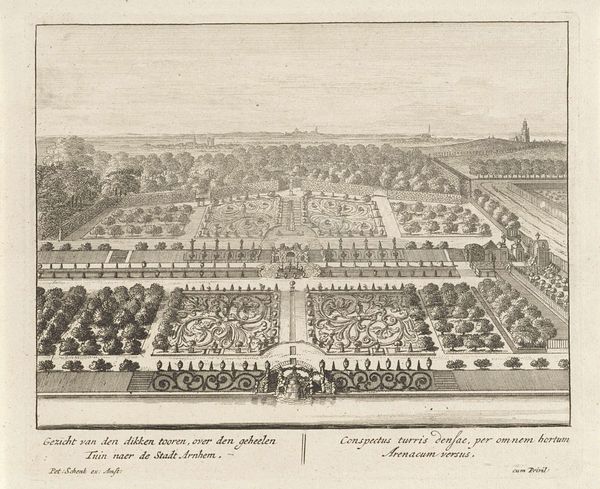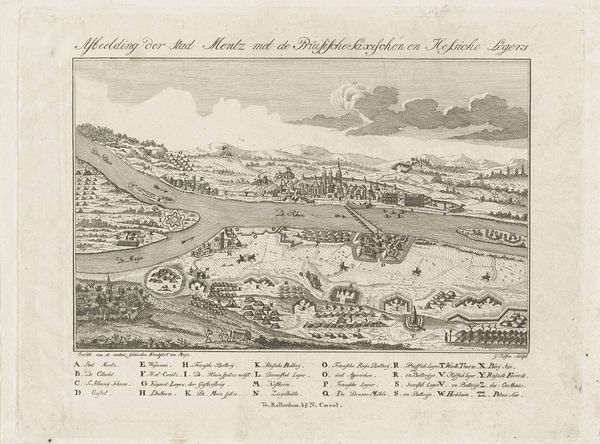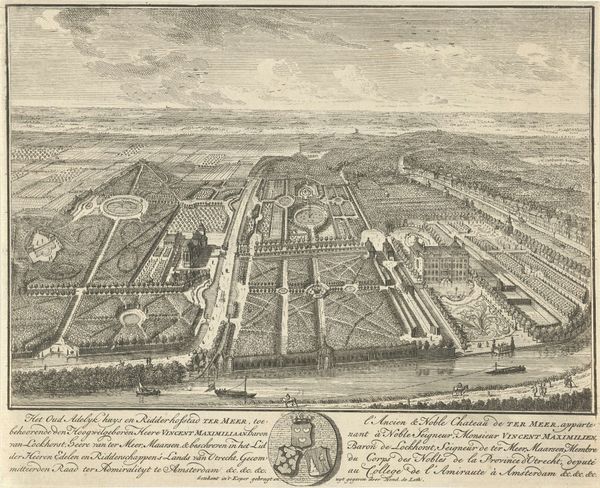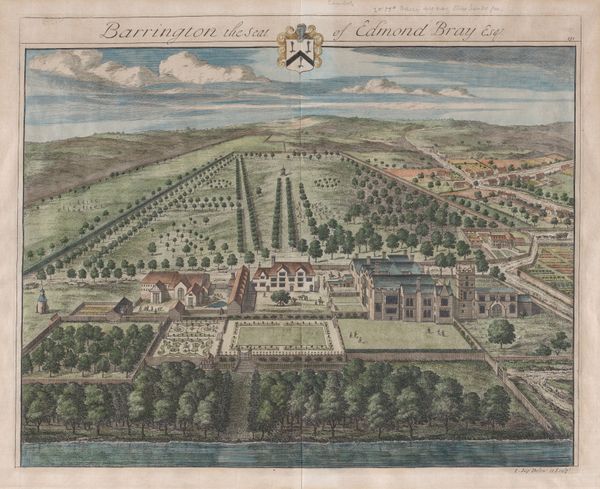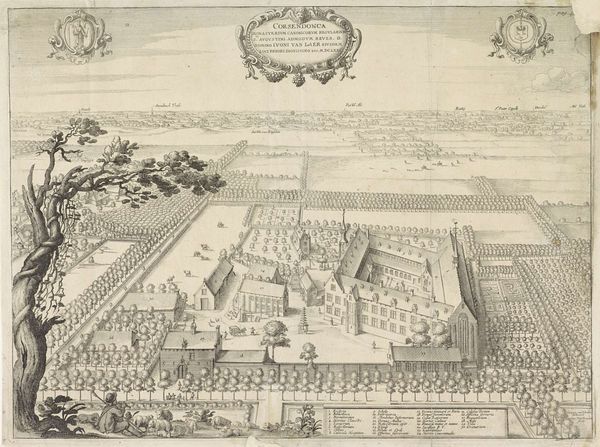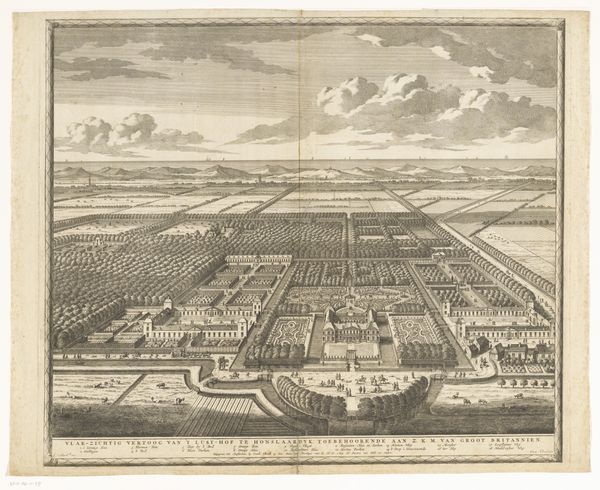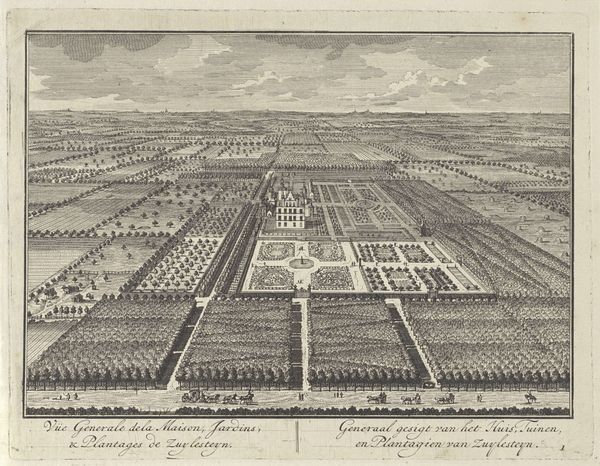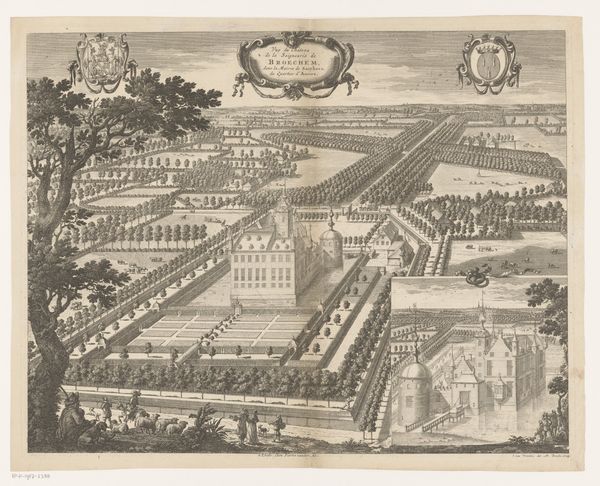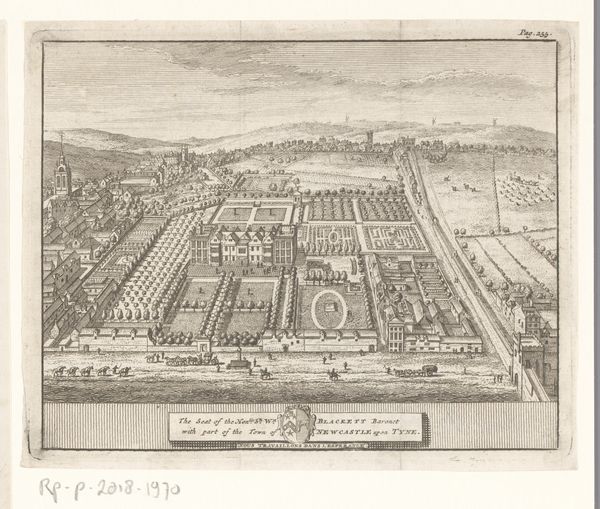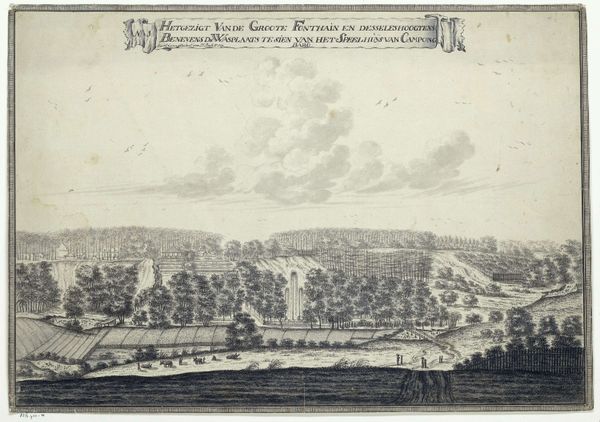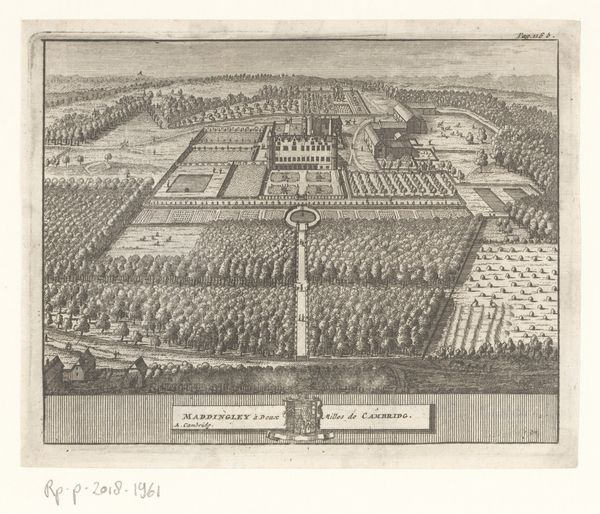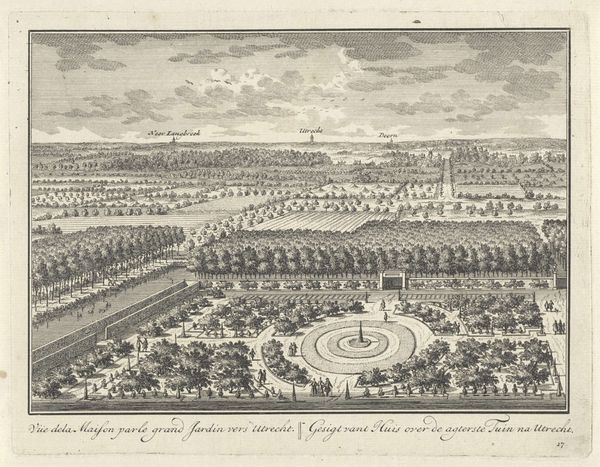
print, engraving
#
baroque
# print
#
old engraving style
#
landscape
#
cityscape
#
engraving
Dimensions: height 356 mm, width 439 mm
Copyright: Rijks Museum: Open Domain
Editor: So this is "Gezicht op Stoke Bishop" from 1709, an engraving by Johannes Kip. I'm struck by the almost… geometric order of the landscape. It feels very controlled, almost artificial. How do you interpret this work? Curator: This engraving isn't just a picture; it's a statement. Look at the positioning of Stoke Bishop within its surrounding landscape. Note the ways landed gentry reshaped environments to reflect and reinforce social hierarchies and power structures. What does the meticulously planned garden suggest to you? Editor: A demonstration of wealth? Almost like taming nature to reflect status? Curator: Precisely! The formal garden, in contrast with the more naturalistic background, underscores human dominance over the land, but it also showcases control over labor. Whose labor do you think sustained this idyllic setting? Consider gender, race, and class within the historical context of early 18th-century Britain. Editor: I guess the idealized image hides the exploitation necessary to maintain such a manicured landscape. It also appears there were many unseen workers to cultivate the design... Wow, I never thought of it like that. Curator: These landscapes aren’t passive backgrounds, they are stages upon which social dramas are enacted. Now, imagine these dramas beyond a wealthy landowner. How does viewing it through a critical lens complicate our understanding and appreciation? Editor: It makes you think about the narratives that aren't immediately visible. About who benefits, and at what cost. It makes it a far richer and complex picture! Curator: Exactly! It also reminds us to look critically at any idyllic representation. What seems beautiful on the surface often obscures power dynamics that we must expose.
Comments
No comments
Be the first to comment and join the conversation on the ultimate creative platform.

